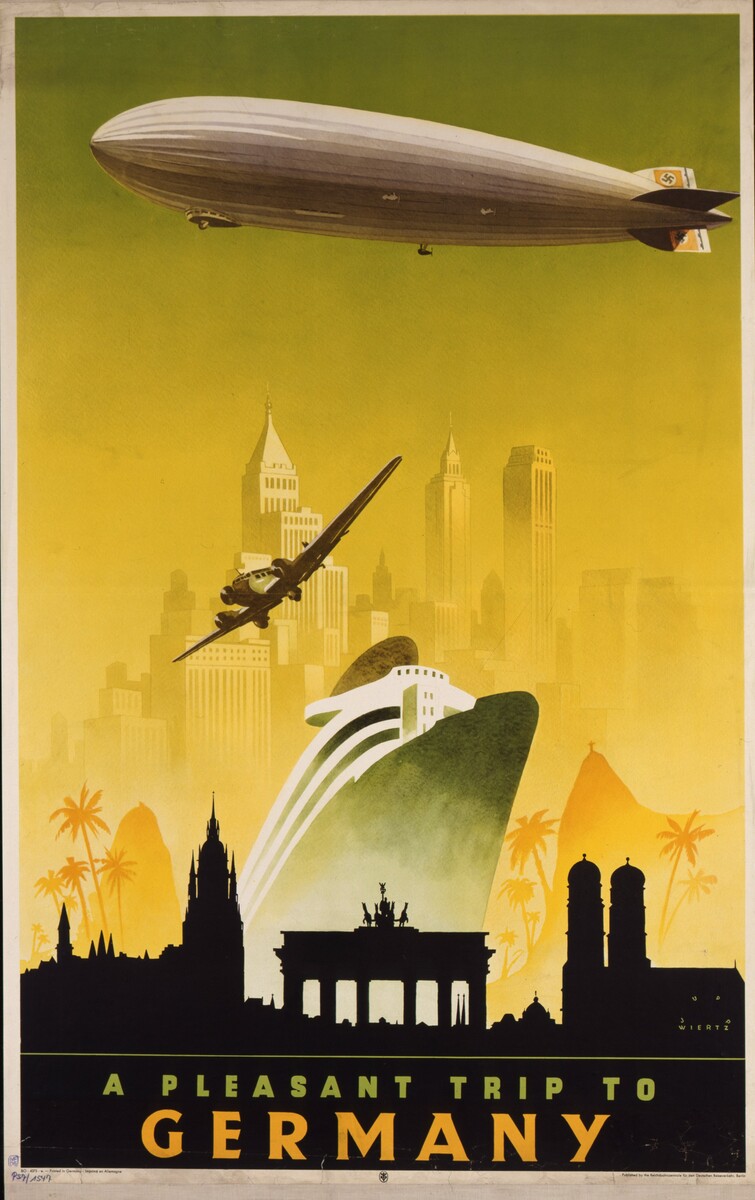Source

Source: Poster, c. 1936. Artist: Jupp Wiertz. Deutsches Historisches Museum, Berlin, Inventarnr. P 57/1547.
In the early years of the Nazi dictatorship, attracting tourists from abroad was one of the regime’s strategies in its attempt to demonstrate its legitimacy and peaceful intentions. In June 1933, Hitler formed the Reich Committee for Tourism. Posters like this one designed by well-known commercial artist Jupp Wiertz for the German Railroad Tourist Information Bureau (Reichsbahnzentrale für den Deutschen Reiseverkehr, RDV) were displayed to attract foreign visitors to Germany. The RDV maintained offices in cities across Europe, North and South America, Africa, and Asia in order to promote travel to Germany and provide assistance with travel planning. The design elements of this poster suggest that it was used for advertising in North and South America. In fact, the tourist industry flourished during the Nazi period as people from all over the world visited Germany, especially during the Olympic Games of 1936. The technological advances in travel are also featured in this poster: Germany’s leading shipping line, the Norddeutscher Lloyd Bremen, connected Germany and the United States, bringing thousands of travelers every year. By the end of the 1930s, Deutsche Lufthansa, Germany’s national airline, had established flights all over Europe, to North America, Africa, South America, and the Middle East. In the early years of the Third Reich, only 10.2% of overnight stays in Germany’s hotels and hostels were booked by Germans through the KdF, meaning the majority of travelers came from outside of Germany.

Source: Poster, c. 1936. Artist: Jupp Wiertz. Deutsches Historisches Museum, Berlin, Inventarnr. P 57/1547.
© Deutsches Historisches Museum